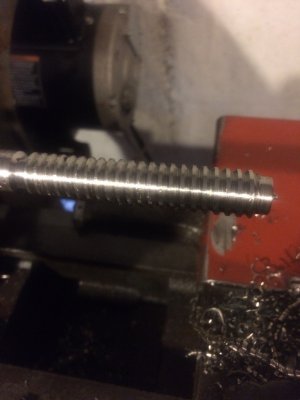- Joined
- May 7, 2015
- Messages
- 269
Are you kidding? Threads like this one are my favorites. I hope Joe is OK with how his thread has evolved, cause there is definitely a lot to be learned here. As far as putting me on the spot, here is what I'm planning. Just the other day I ground a 3/8" tool with front and side clearance, a small nose radius, but almost no side or back rake. This tool seemed to cut pretty well on my 12" Logan, BUT, I don't really think that I have enough experience to know the difference between a good cutting tool or a poor cutter. So I'm going to grind another 3/8" tool with the angles that you listed in post #78. Then I will cut the same steel rod, half with each tool. This way even a beginner like me should see a difference, and if it is OK with you Joe, I'll report my findings here. One thing I need from you first Mikey is, please tell this beginner what you mean by a "square tool" Thanks, JR49
JR, I do not mind at all, mikey has been helping me and providing me good info. I love all of the different views and perspectives given, I love how this post has progressed. and welcome everyone's feedback and experimentation's. I am learning a bunch.
Joe


